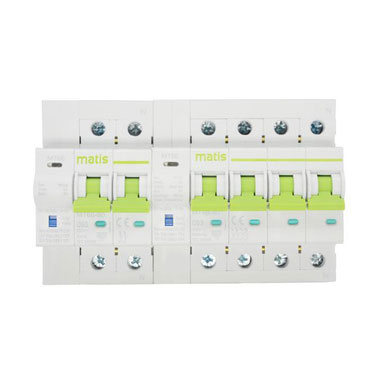Residual-current Devices in Industrial Applications
2023/05/16 丨Technical
Residual current devices (RCDs), also known as ground fault circuit interrupters (GFCIs). RCDs are widely used in residential and commercial applications, but they are becoming more common in industrial environments as well. This is because industrial environments can be more dangerous than others due to the presence of high-voltage equipment and the use of flammable materials. This article will explore the challenges of using RCDs in industrial applications and the solutions to overcome them.
The Role of RCDs in Industrial Applications
Residual current devices are designed to prevent electric shock hazards and minimize the risk of fires caused by ground faults in electrical systems. They work by detecting a slight imbalance in the current flowing through the circuit's fire and neutral wires. If an imbalance is detected, the RCD quickly interrupts the circuit to prevent an electric shock or fire.
In industrial applications, Residual-current devices play a critical role in ensuring the safety of workers, equipment, and infrastructure. However, despite their importance, RCDs face a number of challenges in industrial environments that can affect their performance and reliability.
Challenges in Industrial Applications
High-Fault Currents: In industrial applications, electrical systems can experience high fault currents, which can cause RCDs to trip incorrectly or fail to trip when needed. Conventional RCDs may not be able to detect and interrupt higher fault currents fast enough. Type B RCDs with higher fault current ratings are better suited for the higher fault levels that can occur in industrial equipment. In addition, high fault currents can cause significant damage to equipment and pose a safety hazard to personnel.
False Tripping: In industrial applications, RCDs may be more prone to false tripping due to the presence of high-frequency harmonics, transient voltage spikes, or leakage currents. This is because RCDs are designed to detect imbalances in steady-state currents rather than the high transient currents associated with inrush currents. In addition, high inrush currents can cause significant damage to equipment and increase maintenance costs as well as pose a safety hazard to personnel.
Environmental Factors: RCDs in industrial applications can be exposed to harsh environmental conditions. Such as dust, extreme weather, and temperature extremes, which can affect the performance and reliability of later RCDs. In addition, exposure of RCDs to electromagnetic interference can lead to false trips or prevent them from tripping when needed.
Compatibility with Equipment: Non-sinusoidal current waveforms in certain types of equipment, such as variable speed motor drives and other power electronics, can generate electrical noise or leakage currents that interfere with RCD operation. Compatibility issues can result in unreliable or ineffective protection, and the RCD should be able to accommodate these changes without compromising safety and performance.
Solutions for Overcoming Challenges
Choosing Suitable RCD: Choosing the right RCD for an application scenario requires consideration of the load, harmonics, and leakage current that may be generated. Type A RCDs, for example, are suitable for general applications, while Type B RCDs are required for applications with DC leakage currents, such as electric vehicle charging stations.
Time Delay: To prevent false tripping, RCDs can be equipped with a time delay function that allows them to withstand the transient currents associated with inrush currents without tripping. This feature stabilizes the inrush current before the RCD trips by delaying the response of the RCD by a small amount. This reduces the possibility of unnecessary shutdowns and reduces equipment damage and downtime.
Selective Coordination: Consider selective coordination when designing electrical systems to ensure that only the RCD, closest to the fault, trips while all other upstream RCDs remain operational. RCDs with different trip settings and coordination between them minimize false tripping and ensure reliable protection. Selective coordination is recommended for applications with multiple RCDs. This technique not only improves the reliability of the RCDs but also reduces downtime and maintenance costs.
Regular Inspection and Maintenance: Regular inspection and maintenance of the RCD is essential to ensure its proper operation and extend its life. This includes testing the RCD regularly and following the manufacturer's recommended maintenance procedures (cleaning, inspection, and testing).
Conclusion
Residual current devices are an important component of electrical safety in industrial applications. However, high fault currents, false tripping, compatibility, and post-maintenance issues must be considered when using RCDs in industrial applications. By using techniques such as selective coordination, time delay, and compatibility design, RCDs ensure reliable protection even in the harshest industrial environments.
- Solutions
- Products & Support
- Cases
- About us
- Contact
TEL:+86 18621879631
Email:timmy@matismart.com
Mobile phone:+86 15801814653
Address:Room 320, No.83, Huanhu West Road 3, Pudong, Shanghai, China, 201306
Wechat:+86-15801814653
Skype:timmybao2008
 沪ICP备09024882号-1
沪ICP备09024882号-1




 CN
CN





 Home
Home

